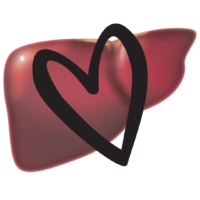Fiber basics and benefits
Fiber comes from the structural parts of plants, such as stems, trunks, roots, and leaves.
It holds water, regulates bowel activity, and binds substances for removal from the body.
There are two types: soluble or insoluble.
You can get dietary fiber from whole foods, supplements, and functional fiber from foods fortified with fiber.
Fiber in the large intestine attracts water, which helps soften the stool for passing.
Foods high in soluble fiber may help lower blood cholesterol by binding with bile acids for excretion out of the body and causing the liver to use more cholesterol to make new bile acids. We make most of our cholesterol in the body by recycling bile – not from cholesterol in our diet.
Soluble fibers can slow nutrient movement through the digestive system, helping prevent blood sugar spikes. They slow the transit of food through the upper intestines, pull moisture into stools, helping soften them, and can be fermented and used as energy for the lower intestine.
Insoluble fiber increases fecal weight and helps move waste through the system by absorbing water and providing bulk.
Sources and amounts
Whole foods rich in fiber are usually lower in chemicals, seed oils, and sugars and help fill you up.
The FDA recommends 28 grams/day for 2000 calorie/day diet. A range of 19 to 38 grams/day is considered safe and beneficial. Excessive fiber can steal minerals from your gut and hinder digestion, so more isn’t always better.
Fiber issues
Does fiber bloat you or make you gassy? You may have some gut issues that need to be dealt with. Grab a call, and we can talk about what you can do to reduce those symptoms—things like prebiotics or digestive enzymes. We can run labs to take a peak under the hood and see what is stressing out your system, like GI-MAP or a Mediator Release Test. High fiber is not always best for everyone at a given time.
Besides the bloat, excessive fiber can steal minerals from your gut and hinder digestion, so more isn’t always better.
Four essential fiber goals
Build your fiber intake slowly and be consistent daily, especially if high fiber causes symptoms.
Drink plenty of liquids. Fiber needs the water to work.
Use whole food (dietary) sources first and choose a variety. Use functional fiber sources to supplement – I’m a big fan of Sunfiber.
Consider any food sensitivities and allergies, and go organic, preferably.
Healthy fiber sources
- Fruits – bananas, citrus, apples, blueberries, blackberries, raspberries, strawberries
- Vegetables – broccoli and cauli, avocado, cabbage, carrots, green beans, sweet potatoes, peppers
- Legumes – black-eyed peas, black beans, pinto beans
- Grains – oats, grits, whole grain breads and cereals (not for everyone)
- Enriched tortillas such as Mission Carb Balance
- Supplements (Sunfiber, etc.)
- Fortified foods – not my first choice, but they are out there
What are your favorite fiber sources?





